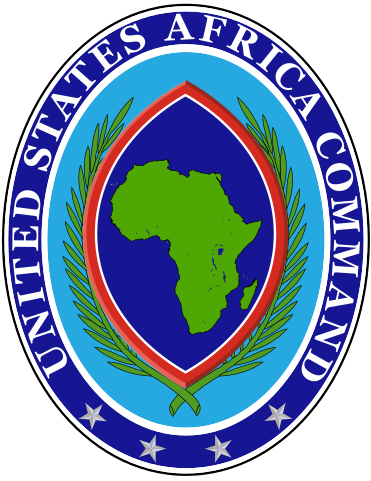U.S. Africa Command Strike Process
U.S. Africa Command Airstrikes fall into two broad categories – deliberate and defensive.
U.S. Africa Command Airstrikes fall into two broad categories – deliberate and defensive. Deliberate strikes go through a multi-step review and have multiple levels of oversight throughout the target development. Defensive strikes are executed in limited circumstances where U.S. or specifically designated partner forces are in imminent danger from hostile forces. U.S. forces have the inherent right to self defense when attacked by hostile actors.
The U.S. Africa Command deliberate targeting process employs many specialized personnel through multiple levels of review and oversight.
During the target identification and nomination process, military lawyers conduct a review to determine that the identified individual or individuals are legal combatants under the law of armed conflict.
Combatants are defined as persons with direct participation in an armed conflict, or persons whose hostile actions have purposefully and materially supported hostilities against the U.S., partners, or allies. Individuals who are formally or functionally part of a non-State armed group that is engaged in hostilities may be combatants because they either share or execute that group’s hostile intent. In the targeting process, every individual is considered a protected civilian until they are positively identified as legitimate military targets.
U.S. Africa Command conducts a thorough, multi-disciplinary intelligence assessment derived from a variety of collection methods such as signals, human, imagery, and open source intelligence among others. As strikes are executed, our forces maintain intelligence awareness of the intended target to ensure continued positive identification and mitigate civilian harm and collateral damage. All personnel in the U.S. Africa Command area of responsibility are protected civilians unless they are positively identified as legitimate military targets.
Once a combatant has been identified and conditions have been met to utilize strike authorities, U.S. Africa Command will not engage unless there is a near certainty that the identified target is indeed the intended target. To further prevent unnecessary collateral damage, U.S. Africa Command follows Department of Defense Law of War Manual precautions:
- Adjusting the time of attack;
- Weapons selection process;
- Identifying zones in which military objectives are more likely to be present or civilians are likely to be absent.
Prior to any airstrike, commanders consider weapon effects, delivery parameters, the target itself and alternatives to both eliminate the threat while protecting civilians and property. The airstrike itself is extraordinarily precise due to a combination of comprehensive intelligence, advanced technology, and operator skill. However, no organization is perfect, conflict is often unclear and we make mistakes.
For more on our civilian harm review and reporting process. Please follow this link: https://www.africom.mil/what-we-do/airstrikes/civilian-harm-report
In its targeting process, U.S. Africa Command works tirelessly to protect civilians because it is the lawful, moral and ethical thing to do.
